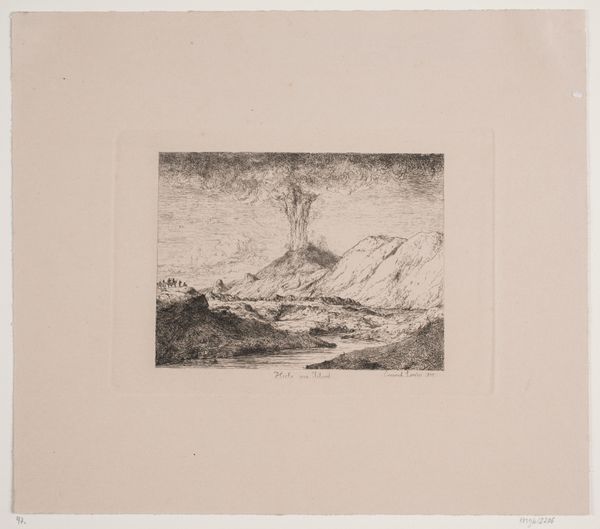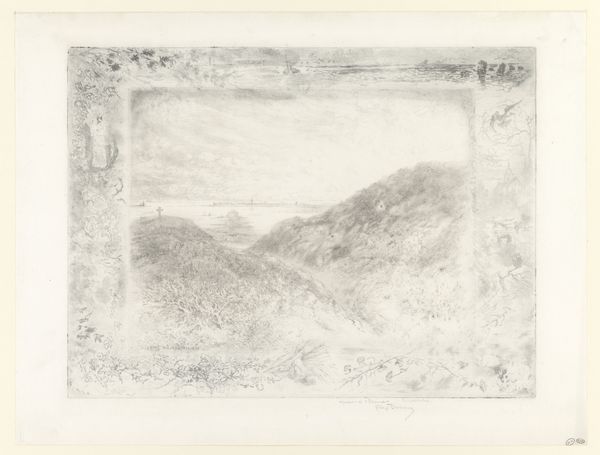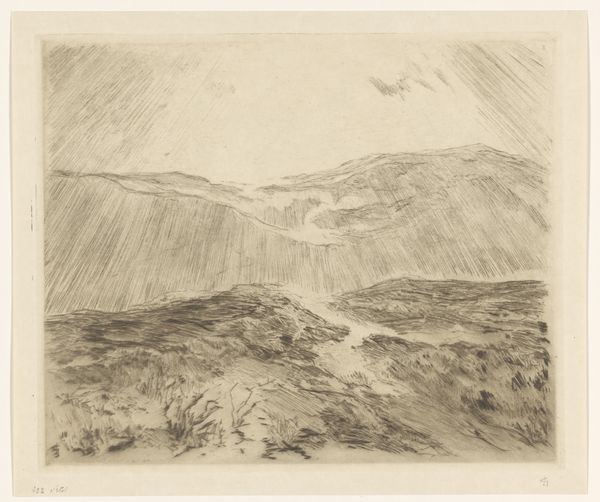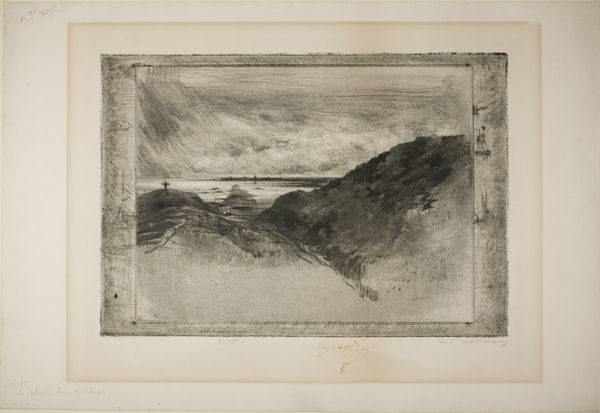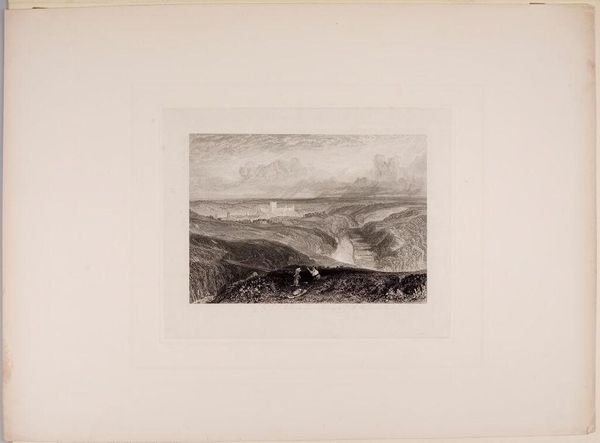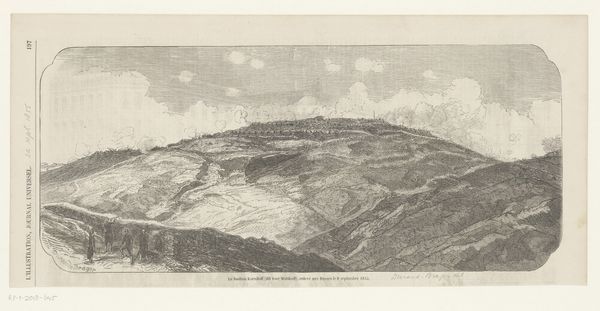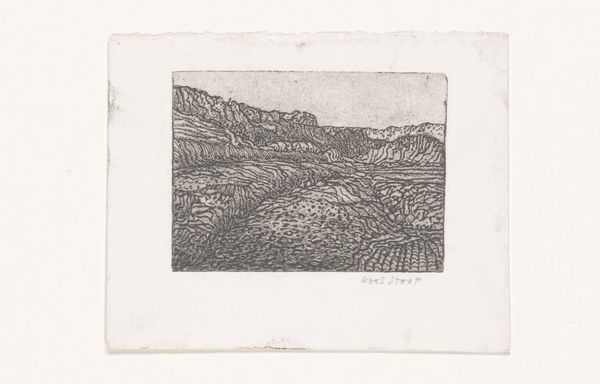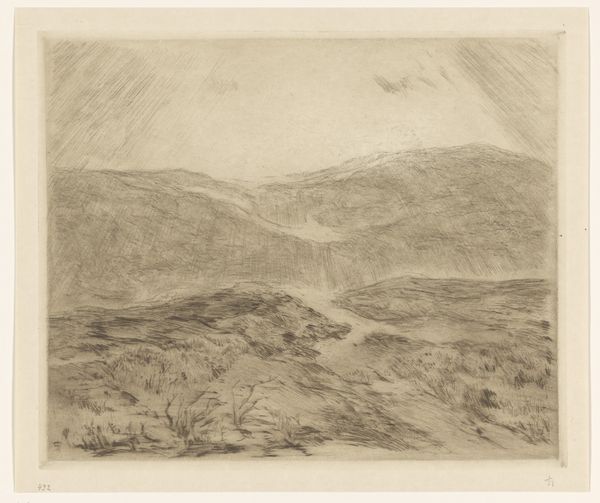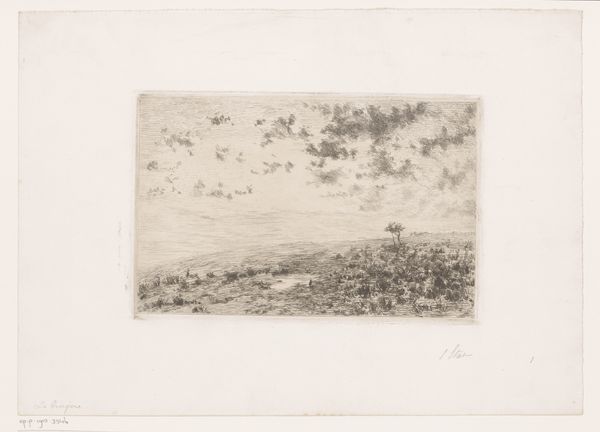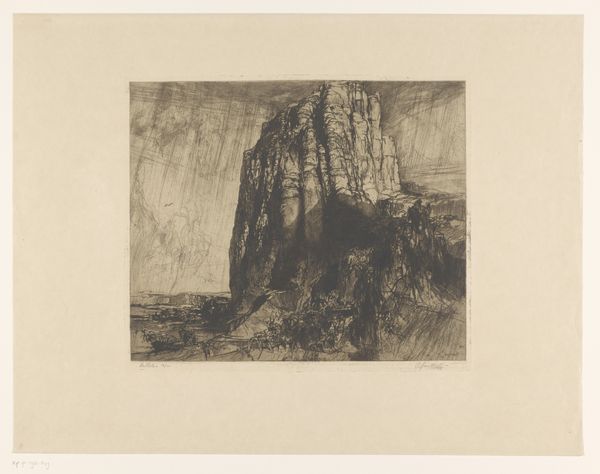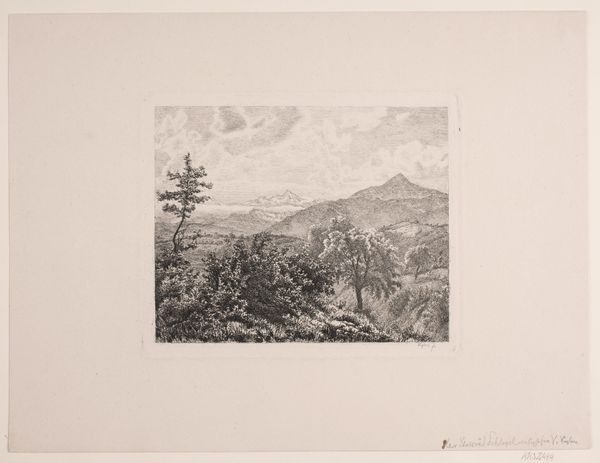
Dimensions: 226 × 292 mm (plate, main image); 282 × 381 (sheet); 300 × 400 mm (plate, false margins); 430 × 520 mm (sheet)
Copyright: Public Domain
Félix Hilaire Buhot created “The Cliff, Bay of St. Malo” as an etching sometime in the late 19th century, a period of rapid social change in France. The image shows a panoramic view from a high vantage point looking out over a bay, with a dramatic sky overhead. What’s interesting, however, is the decorative border around the central image, which includes vignettes of ships, birds, and buildings. This etching reveals the artist’s engagement with the aesthetic movements of the time. As the printmaking revival gained momentum, artists sought to elevate the status of printmaking to that of painting. We see the Bay of St. Malo, in the Brittany region, which became an important site of artistic production. Brittany offered a sense of escape from the industrializing and modernizing urban centers. Artists were attempting to critique the institutions of art by experimenting with a hybrid art form. To understand Buhot’s work better, we might consult exhibition reviews from the time or research the market for prints. Only through close attention to social context can we understand the meaning and value of works of art.
Comments
No comments
Be the first to comment and join the conversation on the ultimate creative platform.
